Apple iPhone 3G Review
Apple iPhone 3G Review
It's over hyped and over here, but is it worth it? Find out in the only iPhone 3G review worth reading…probably.
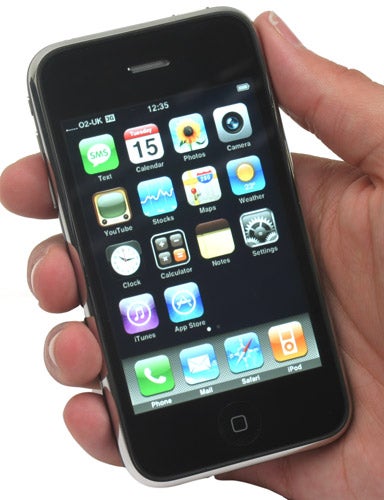
Verdict
Introduction
It’s all a bit silly, isn’t it? Nothing, especially a mobile phone, truly deserves the amount of attention heaped upon the iPhone 3G. Yet, such is the nature of the device, the company that makes it and the media that follows it all, it attracts the kind of hysteria normally reserved for the front page of The Daily Mail. Throw in a launch with Monty Pyhon-esque levels of farce – albeit nothing like as funny – and it’s a recipe for weeks of discussion, dissection and, quite often, vitriol.
All of which is a shame because, as the original Apple iPhone proved, this is a product that can quite easily stand alone without the hype. Not perfect, granted, even now it still lacks one or two features many regard as essential, but then the iPhone has a few things no-one can even touch – touch being one of them. The iPhone 3G then is not the revolutionary device that the original was, more of an incremental upgrade, but it’s all the better for those upgrades.
Let’s start with the headline grabbing feature: 3G. There it sits, two little letters that signify one massive, nay essential, addition to the iPhone. Notwithstanding the brilliance of the original iPhone, and it was brilliant, the addition of 3G really makes this the product the original should have been. Where before one tolerated the EDGE network to enjoy the fruits of the effortless touch sensitive navigation, sleek design and the unique web browsing, now it’s possible to enjoy all of these in a package that delivers a Mobile Internet experience fit for this fast paced modern age of our

How big is this difference? Well, using the 2G EDGE network it takes 38 seconds to download the BBC homepage, while on 3G it takes only 18.5. All told around twice as fast and that test was run in a relatively low 3G signal area, so in stronger signal areas the difference will be all the greater – Apple claims 3G is around 2.4 times faster. Just for reference, on standard 2G GPRS you’ll be waiting over two minutes.
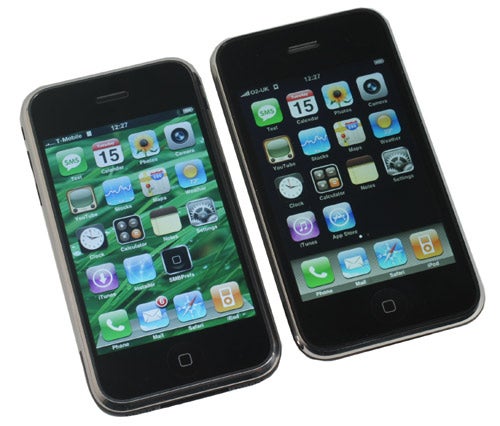
Twice the speed, by any measurement, is a significant difference and makes web browsing in particular faster, more efficient and, importantly, richer. Other elements, like Google Maps, are obviously faster as well, though it benefits less from the higher speeds and is still perfectly usable on EDGE.
There are some practical advantages to 3G as well. It means that, alongside GSM and EDGE support, you have the maximum level of network support. This is an important consideration for those that travel widely. Japan, for example, has no GSM network, so 3G is an absolute must to roam there. Another advantage is you can use data at the same time as making a voice call, useful if you need to look up information on the Internet while in conversation.
Battery Life & Design
There is, however, one obvious loser from the inclusion of 3G: battery life. Yet, the end product isn’t anything near as bad as some might have feared. For starters, although on 3G battery life is obviously worse than on the original, at just over five hours 3G talk time it’s still better than the majority of other 3G based smart phones. A further plus is the ability to turn off 3G whenever you like and with close to ten hours of 2G talk time, it makes a massive difference – it’s a shame this can’t be done automatically. Other quoted figures include seven hours video playback, 24 hours audio playback and 300 hours stand-by, all of which sound fine and given the talk time figures have proved more or less accurate are believable.
What’s more revealing, however, is the real world experience. In medium to heavy mixed usage, including phone calls, 3G and EDGE data, Wi-Fi, GPS and music playback, you can expect one day of usage with around 20% of headroom to spare. If you restrict yourself to lighter usage, using only 2G and listening to music, two days of usage is easily attained
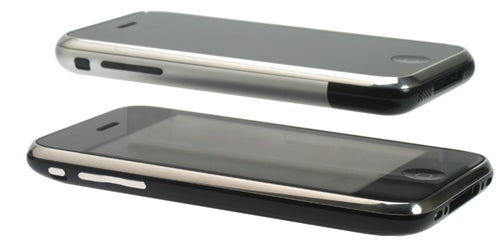
Ultimately, given the sheer versatility and ease of use, everyone’s mileage will vary depending on usage. From our experience only very demanding users who are on their feet all day, accessing websites constantly and using all the features of the phone at once should encounter any real problems. If you are one of these people, a portable USB battery charger might be a good investment since the battery is still non-removable – something that seems unlikely to change any time soon.
There are still plenty of other changes, however. One of the simplest, but most important, is the headphone port that’s no longer recessed and as such is compatible with all 3.5mm headphone plugs. It seems somewhat incongruous to praise something that should have never been a problem in the first place, but if this put you off before then it’s another reason to buy this iPhone.
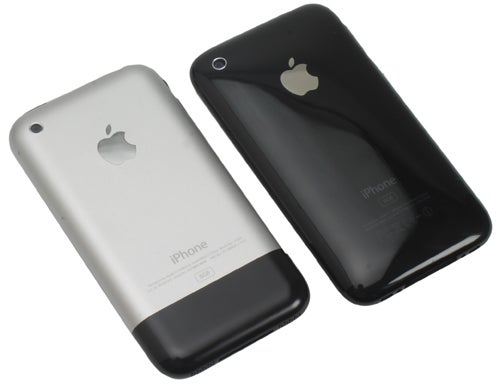
This has been made possible by the new plastic casing of the iPhone 3G that replaces the metal one of the original. There’s been much discussion about this particular change and whether it was a good thing, but on balance it definitely is. Despite the 3G being thicker than the original, the plastic casing allows for more aggressively tapered edges that make it look and feel thinner. This helps it sit more comfortably in the hand and whereas the metal original was notoriously slippery, the glossy finish allows for a more secure hold.
On the flip side the plastic finish, particularly in its black guide, attracts and shows off fingerprints with abandon. Common sense would also suggest it won’t be as strong but, for the record, the plastic casing feels very strong and the build quality is just as good on this model as it was on the original. If anyone wants to volunteer their iPhone for some ruggedness testing, we can find out exactly how strong that plastic really is…anyone? At very least we know that it does blend.
Design Cont. & GPS
Aesthetically there are a few other minor tweaks, but ones that enhance the overall look of the unit. To match the black back, all the hardware buttons around the sides are chrome coloured instead of black. There’s no change to the composition of the buttons, though, with a volume rocker and silence switch on the left and a hold/power button on the top. Even more subtle is the bezel, which is ever so slightly thicker due to this model being 1.1mm wider than the original. Overall, the iPhone 3G is every bit the exemplary piece of design and engineering the original was and its slimmer looking exterior only enhances this.
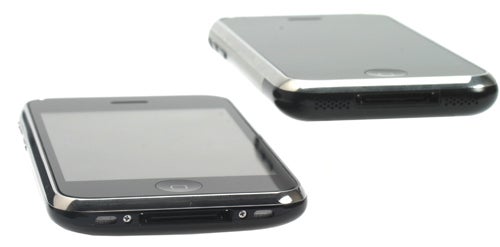
Having covered the main hardware change over the original iPhone, it’s about time we talk about the other: GPS. As with many phones the iPhone 3G utilises Assisted GPS (A-GPS) that uses both GPS satellites and nearby mobile phone masts and Wi-Fi hotspots to triangulate your position. This, as seen on the Nokia E71, can work very well indeed. In our neck of the woods we found it could take a minute or two to get a fix on your current location, but in built up areas where it’s less reliant on GPS it’s far quicker. Once fixed on it works very well and tracks your location easily be you on foot or in a car. It’s particularly handy if you’re lost on the road or in the city and also enables various applications to use this information for geo-tagging and location sensitive services.
It doesn’t, however, make the iPhone a full fledged GPS device in the way a TomTom is. First and foremost there’s no software to enable such functionality and if and when such a thing does exist one suspects the in-built speakers, though more than adequate for ring tones and other alarms, aren’t loud enough for giving directions in a noisy car.
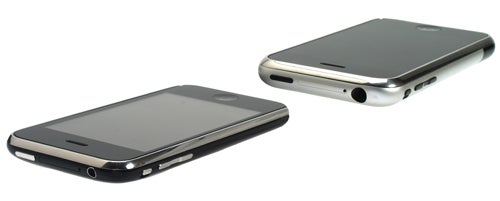
Nonetheless, the implementation of A-GPS on the iPhone 3G is pretty good. A full fat GPS device it might not be but you can program routes using Google Maps and provided you know roughly where you’re going, it’s certainly useful for finding your way in the fiddly bits towards the end of any journey.
Whether it could ever be made into a genuine GPS device is up for debate, but a lot of work would be needed to make it better than the likes of the TomTom One, Navigon 2100 or the Route 66 Mini Regional Sat-Nav – all of whom can be had for £100 or less. It’s also worth noting that using the GPS extensively is one of the more battery draining features so prolonged use will severely curtail longevity. With all these factors combined you can colour us sceptical.
Interface, Mobile Safari & Multimedia
With all this talk of new hardware and design tweaks it’s a miracle we’ve yet to mention the continuing majesty of the iPhone interface, so let’s remedy that. Forgive us if “majesty” sounds needlessly deferential but few phones, if any, can approach the ease of use and intuitiveness of the iPhone. Picking up, for example, another touch screen phone like the LG Viewty tells you everything you need to know: the iPhone is in a league of its own.
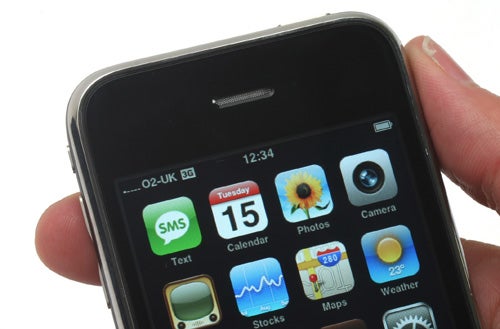
Ostensibly the basics haven’t changed one iota. There’s still the sliding bar to unlock and the grid based main menu is still navigated through effortless prods and flicks. Indeed, it’s hard to underplay exactly how responsive the 3.5 inch, 480 x 320 multi-touch screen is. Every action is swiftly enacted and you’re never left wondering whether a request has been registered: it just works.
It’s a lovely screen to behold, too. Bright, bold, sharp and clean, it brings photos and video to life and is another facet few can match at this moment in time. If anything, though, its viewing angles aren’t as wide as on the original iPhone. It’s hardly a big problem, one generally looks at phones straight on whatever you’re doing, but a difference exists.
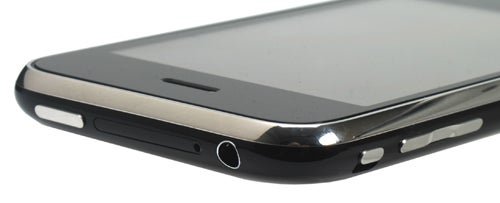
Predictably, however, Mobile Safari is still the jewel in the iPhone 3G’s crown and despite the recent beta launch of Opera Mobile 9.5, it’s still by far and away the best mobile web browser on earth. It renders pages quickly and accurately and its excellent scaling makes them easy to read, too. Throw in the intuitive interface, multi-touch controls, Wi-Fi and now the faster 3G data access and browsing the web on the move has never been so good. Want a Mobile Internet Device? Look no further.
There’s little new to report in the iPod stakes. As with most things on the iPhone the interface is slick and responsive and music, audiobooks and podcasts are all well organised and easy to access. Switching to landscape mode reveals the Cover Flow interface, a neat but not wholly adored feature that can either be enjoyed or ignored. Double-clicking the Home button will, when specified, bring up the iPod controls anywhere including when the handset is locked. It’s a small but incredibly useful navigation tool and one that negates the need for any hardware control buttons
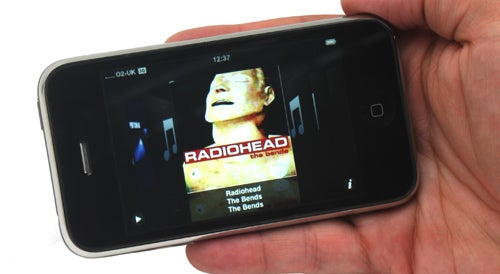
Sound quality is generally good. It’ll never match that found in the dedicated players from the likes of Creative, Sony and iRiver, and, like the original, the 3G produces an ever so slightly compressed sound, but only the fussiest of audiophiles will be disappointed provided one avoids the dreadful bundled headset.
Firmware 2.0, Exchange, MobileMe & Apps
This new iPhone also brings with it the new Firmware 2.0. It’s not unique to the 3G, first generation iPhones and iPod Touch owners (at a cost) can also benefit, and it adds numerous features. First among them is Microsoft Exchange and Push Email support; two features that should expand the iPhone’s attraction to business users. Do they?
Ironically, we haven’t been able to test these features fully because as of yet our tech department doesn’t support the iPhone – a lesson in and of itself. What we can say, though, is the iPhone is a long way from supporting all of the Exchange features needed to persuade business users and tech departments away from their Windows Mobile and Symbian based handsets
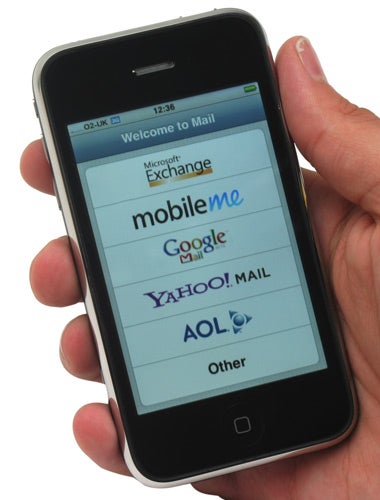
Just basic Email viewing and composition is as strong as it is in any other email application, like Google Mail. There’s added support for attachments and contacts search, yet there’s no support for email Flagging, a basic essential to our minds, or other staples such as Tasks or Notes synchronisation. Neither can you edit common office documents.
More fundamental, however, is the lack of cut & paste – yes that well known and complicated function. According to Apple it was on the wish list but got pushed out. Until this and a few other things change it’s hard to see the iPhone being a convincing business proposition.
Perhaps the answer, though, to why Exchange support isn’t as thorough as it could or ought to be lies in another new service: MobileMe. It’s a subscription service and at £60 a year it’s not cheap, but for the price you get 20GBs of online storage and ability to synchronise your mail, calendar and contacts between your iPhone and your PC/Mac as well store and share photos and documents. All this information can be accessed in “the cloud” via your own online desktop and any changes are then sent to your various devices.
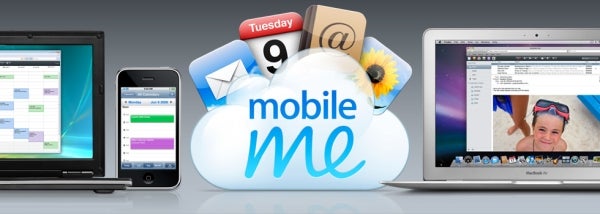
It had its teething problems in the early stages but it’s an impressive attempt at creating a user friendly centralised service, though it’s quite a different beast to the Enterprise focussed Exchange. Ultimately the iPhone’s strengths still lie in consumer friendly activities and though some of its features may appeal to business users, anyone in a big company is unlikely to able to enjoy the full benefits.
Firmware 2.0 does bring more to the table, however, and most of it is great. Applications and the App Store that houses them are bound to have a massive impact on the future of the iPhone, opening new avenues of functionality. Already there’s a multitude of new applications and games, paid for and free, becoming available and though there’s predictably some lame ducks mixed in there, there are some gems as well.
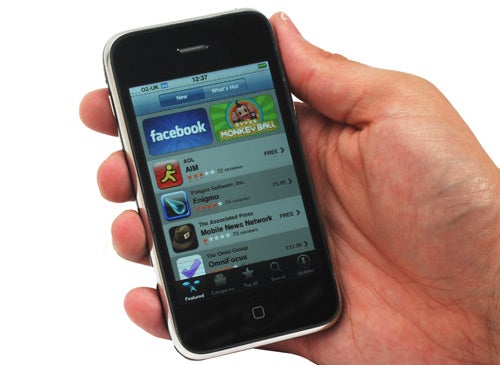
Getting applications on the iPhone is predictably easy and can be done via the device, or synchronised onto the device through iTunes. A couple of good’uns include the iTunes/Apple TV Remote and Zenbe list applications, while in the gaming segment Super Monkey Ball is the stand out addition. We’ll be taking a closer look at the applications available at a later date and rest assured there’s plenty more worthy of note.
Problems, Missing Features & Call Quality
For all these new additions, though, there are still a few things left un-fixed in the iPhone 3G. One that receives an inordinate amount of attention is the lack MMS support. It’s one of these issues you either care about or don’t – personally I’ve never used MMS and don’t plan to start – but for those see it as essential, it’s a black mark against the iPhone.
Less forgivable, however, is the lack of support for the Stereo A2DP Bluetooth profile. This means that you can use ordinary hands-free headsets but not Bluetooth headphones, a logical and fairly straightforward next step. Given the obvious portability of the iPhone and its “connected everywhere” status it seems a bizarre omission.
Fans of camera phones will also be disappointed by the iPhone 3G, as it retains the relatively basic 2.0 Megapixal camera of the original. It lacks any kind of LED flash and though in natural light it’s just about passable, as you can see from the shot on the right, it tends to produce blurry and noisy pictures in low light.
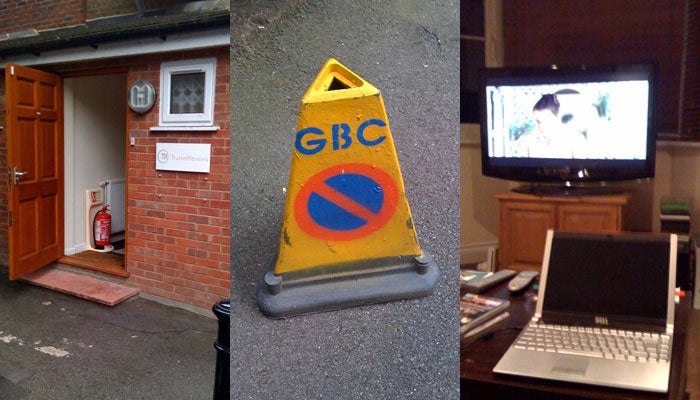
Having praised the interface earlier, there is at least one palpable problem. Though the virtual keyboard is in most respects superb, the iPhone is still very selective about when and where one can use the slightly larger landscape keyboard rather than the portrait one. This inflexibility is particularly galling when composing emails and text messages even if, as already pointed out, the overall experience is very good.
Happily, one area that has seen significant improvement is call quality and signal reliability. 3G obviously helps here, but even without it the iPhone 3G is a significant improvement on its predecessor. It doesn’t drop calls randomly or lose signal for no apparent reason and 3G signal quality is generally good, even in variable coverage areas.
Pricing
For all its qualities; the great interface, stunning design and peerless mobile web browsing, the best thing about the iPhone 3G is it’s price and the rather inviting tariffs that have been created for it. O2 has made much of it now being available “for free”, but unless you really need a stupid amount of minutes and texts each month, the £35 tariff offers very good value when you consider the benefits that come included in the package.
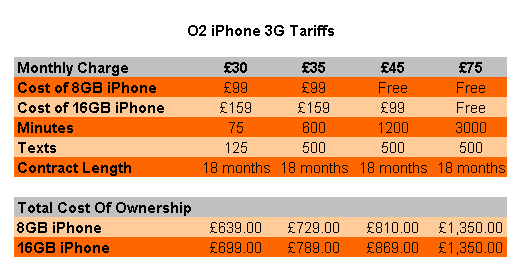
All contracts last 18 months and include Unlimited Data and free access to Wi-Fi hotspots from The Cloud and BT Openzone – both subject to fair usage policies. These are incredibly attractive benefits given both of these cost an extra £7.50 on other O2 contracts and give you an incredible amount of freedom.
Indeed, just to show how good value the iPhone 3G is, we’ve compared the 8GB iPhone 3G on the £35 tariff to similar schemes on other networks for the Nokia N95 8GB – all including unlimited data but only O2 coming with the comparative Wi-Fi access.
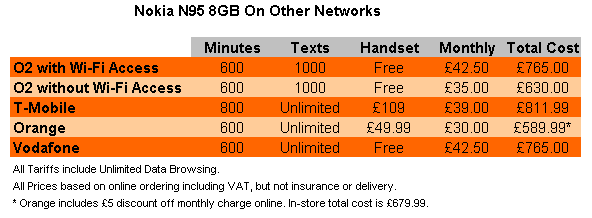
As you can see it comes out pretty well, with only Orange and O2 itself (sans Wi-Fi access) beating what we consider to be the best value iPhone contract. When you consider that no one, other than O2 itself, can offer the same Wi-Fi access it just goes to show that whereas the original iPhone was a tad pricy, this one isn’t at all.
How has Apple done this? First, the basic components of the iPhone will have become cheaper, but switching to a plastic back will also have reduced costs to a degree. Most obviously, however, Apple has changed the contents of the box, making the dock that came as standard before a paid for accessory. It’s a shame, but you do still get the requisite USB cable and charger – the iPhone charges over USB – and if you do really want the dock then it’s a bearable extra cost.
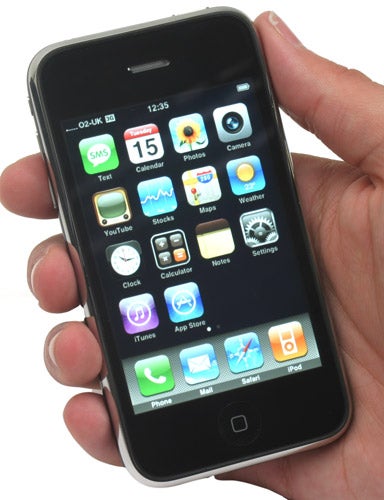
This aggressive pricing seals the deal in our eyes. Though business users are still better off with a Windows Mobile, Symbian or Blackberry handset and some of the small faults and missing features remain, the iPhone 3G has addressed the two key concerns that put people off the original: 3G and price. As it turns out the cost cutting measure of the plastic back is something of an aesthetic success as well, while GPS is a welcome benefit and the interface is as slick and brilliant to use as it ever was. A few niggles, particularly the lack of cut & paste, grate deeper, but much like the Nokia E71 its few niggles are counter-balanced by all the things it does very very right.
Verdict
It may be seen as little more than an incremental upgrade, but Apple has hit all the right buttons to make the iPhone 3G an instant hit. It’s still sleek, it’s still great to use and it’s still the best touch screen phone by a country mile. Wed to this the excellent value it now represents and you can understand why people have been falling over themselves to get one. Unless you absolutely must have a better camera, MMS or any of the other missing features, there’s no other touch screen phone that comes close.
Full Size Test Shots

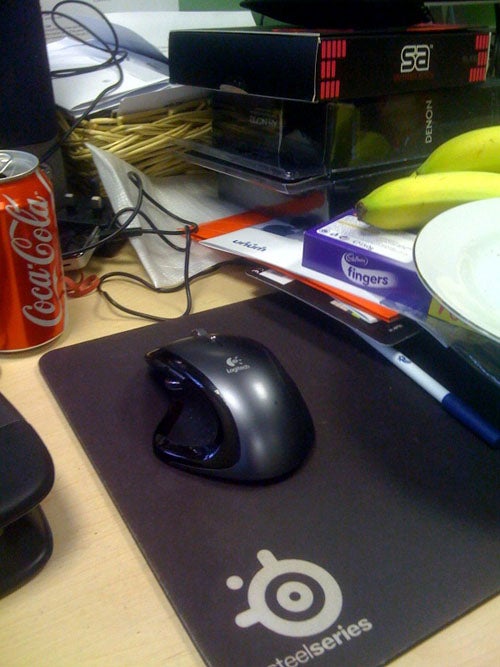
How we test phones
We test every mobile phone we review thoroughly. We use industry standard tests to compare features properly and we use the phone as our main device over the review period. We’ll always tell you what we find and we never, ever, accept money to review a product.
Trusted Score
Score in detail
-
Performance 9
-
Design 10
-
Usability 10
-
Value 9
-
Features 9
General
| Height (Millimeter) | 115.5mm |
| Width (Millimeter) | 62.1mm |
| Depth (Millimeter) | 12.3mm |
| Weight (Gram) | 133g |
| Available Colours | Black |
Display
| Screen Size (inches) (Inch) | 3.5in |
| Screen Resolution | 320x480 |
| Touchscreen | Yes |
Battery
| Talk Time (Minute) | 480m |
| Standby Time (Hour) | 250hr |
Storage
| Internal Storage (Gigabyte) | 8GB |
| Camera (Megapixel) | 2 Megapixel |
| Front Facing Camera (Megapixel) | No Megapixel |
| Camera Flash | No |
Connectivity
| Bluetooth | Yes |
| WiFi | Yes |
| 3G/4G | Yes |
| 3.5mm Headphone Jack | Yes |
| Charging/Computer Connection | via proprietary socket |
Processor and Internal Specs
| CPU | 412MHz ARM 11 |
Misc
| App Store | App Store |
| GPS | Yes |

